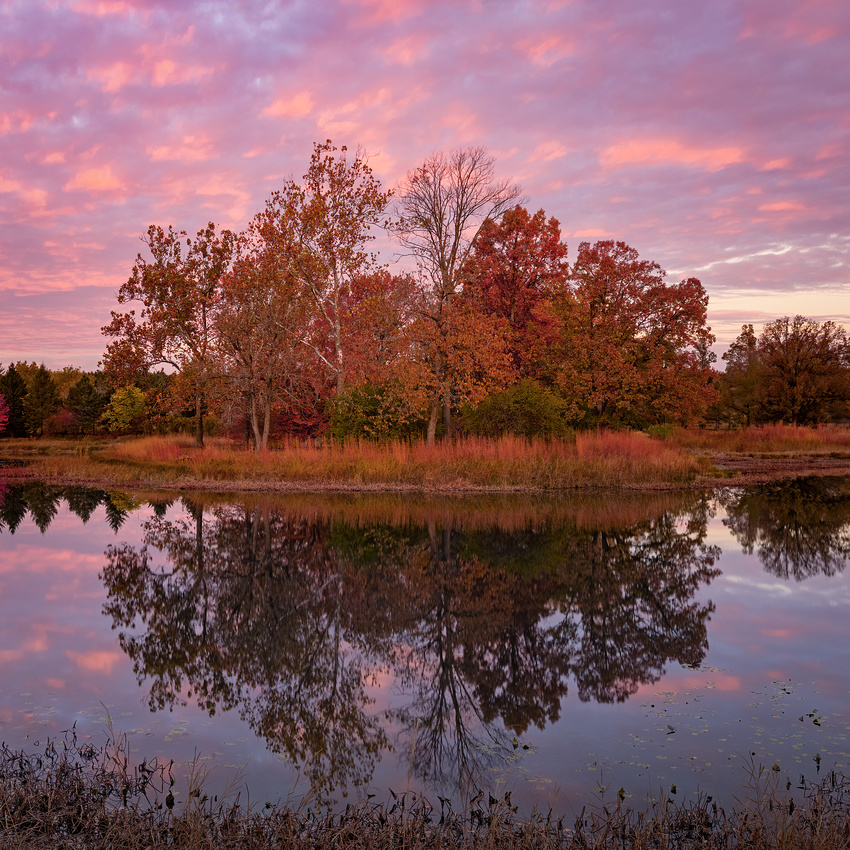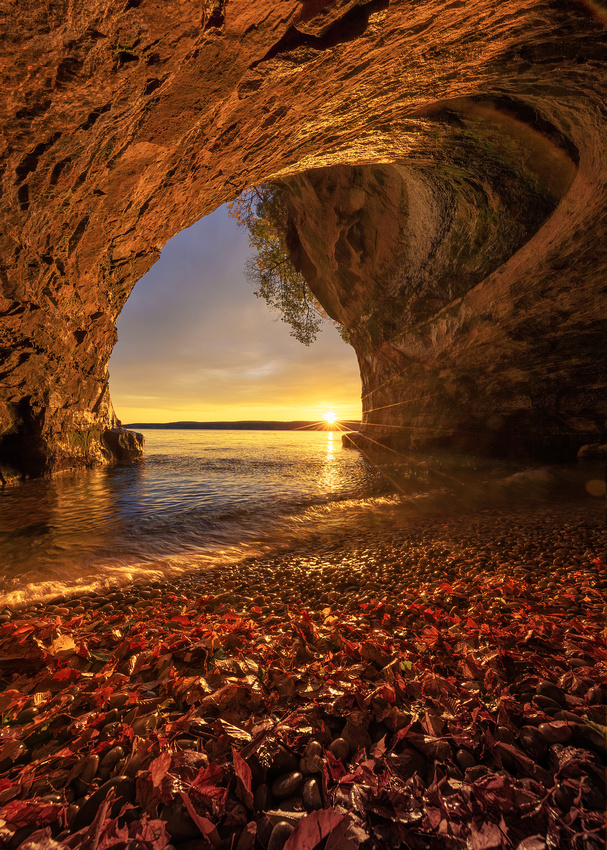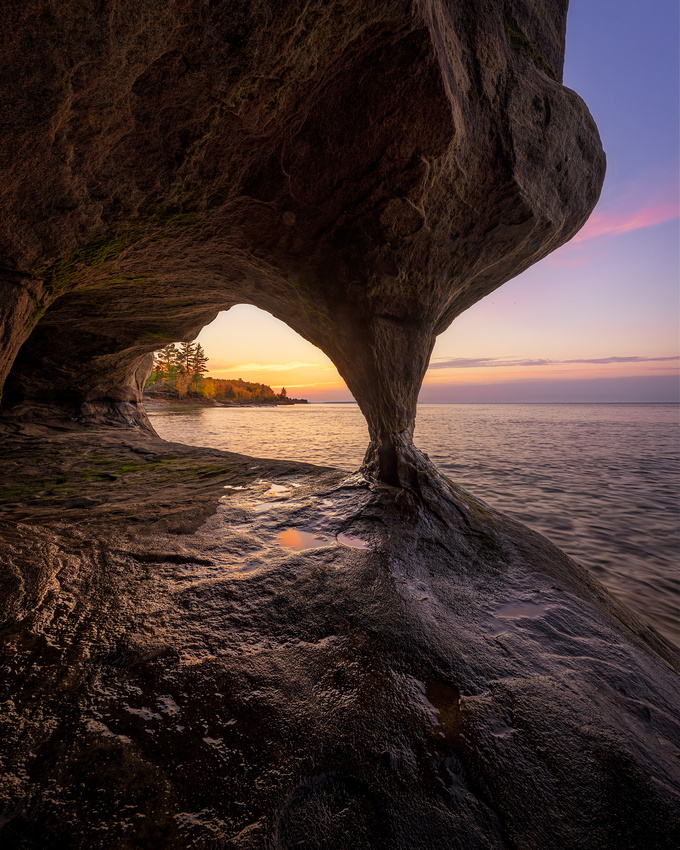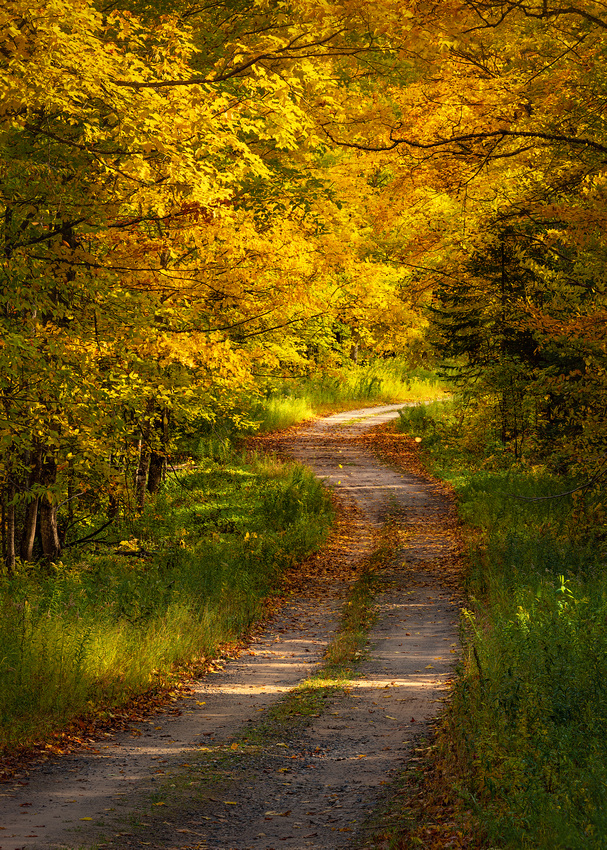Welcome to the landscape photography blog by Chuck Derus. Thanks for looking and for your comments!
I Didn't See That!
Meadow Lake is the first feature Morton Arboretum visitors usually see. It’s on the east side, adjacent to the Visitor Center parking lot.
The lake appears timeless. But it’s only 61 years old. Back in 1959, Route 53 was being widened from two lanes to four lanes. The county needed gravel for road construction.
The gravel came from the meadow behind the Arboretum’s Administration Building. The meadow dated from 1939-1941 when it was defined by plantings around its irregular edges.
The meadow was excavated in May of 1959. After it was filled with water, those same plantings defined a new shoreline.

 1959 Meadow Lake construction. Source: Morton Arboretum Website
1959 Meadow Lake construction. Source: Morton Arboretum Website
The Arboretum’s first director, Clarence Godshalk, choose the lake’s name. Taking the place of the former meadow, it was renamed Meadow Lake.
Mr. Godshalk seemed especially proud of this transformation. He wrote to the Board of Trustees: “The new Meadow Lake has given me more of a thrill in its creation than anything I have done in the Arboretum development... The first thing in the morning and the last thing at night I find great pleasure in looking at this body of water as it grows, now that the lake is being filled.”
By 2004, the six-acre lake needed major attention. Water levels fluctuated. The banks were eroded, and it needed shoreline replanting.
Contractors moved over 100,000 cubic yards of soil to reshape and stabilize over 3,800 feet of shoreline. Over 100,000 native plants were installed. And an underground conveyance system now connected it to a supply lake over 1 mile away. The cost was $3M.
“I didn’t see that!”
Part of the fun of taking a photo walk with others is what they “see.” Despite walking together through the same terrain, the images are seldom the same. When you share images afterwards, it’s common to admiringly exclaim “I didn’t see that!”
It proved to be true again last Friday.
I joined fellow photographer Sherry Snyder for a photo walk at the Arb. Arriving at 7AM, we had a wonderful time photographing and talking. Sherry suggested starting at Meadow Lake where I took this photo just before sunrise.
After moving on to a different location, Sherry found this lovely composition. When she shared with me it a few days ago, I mentally retraced our steps through that Oak Grove. I didn’t see that!
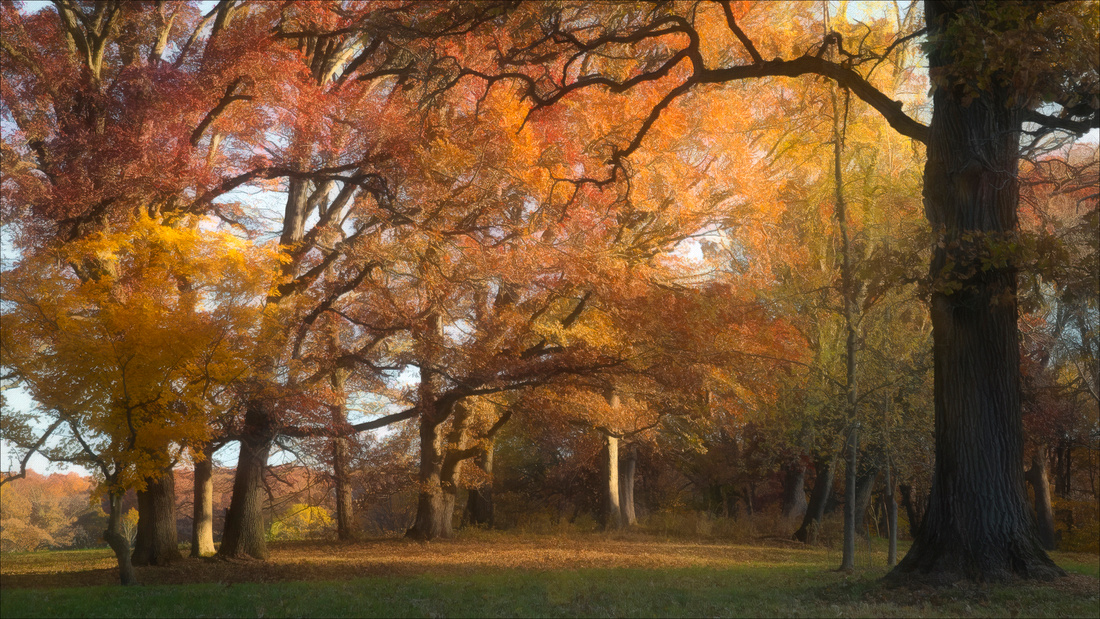
 Copyright Sherry Snyder
Copyright Sherry Snyder
Thanks for looking,
Chuck Derus
Expectations
The plan was to arrive 45 minutes before sunrise. We boarded the boat an hour before sunrise. The boat ride to this sea cave on Grand Island near Munising, Michigan takes 10 minutes. After anchoring, it’s another 5 minutes in a small Zodiac to reach the cave.
On this morning, it took a lot longer. The Zodiac, towed behind the boat, tried to capsize whenever the boat accelerated. Slowed to a crawl, the boat ride to the cave took 45 minutes.
Expectations
The sky conditions were promising. According to my favorite weather app Windy, the high clouds overhead had a good chance of creating a brilliant magenta sunrise. This was because of a break in the clouds to the east.
Halfway to the island on our slow journey, the sky did explode in beautiful pinks and magentas. By the time we stepped into the sea cave, all the color had drained from the sky. It looked downright dreary just before dawn.
It would have been all too easy to return to shore for coffee and breakfast. We were hungry, cold, and wet. But it was time to let go of expectations and embrace whatever the rest of the sunrise had to offer.
In the words of photographer Don Smith, “…those who rely on perseverance will more often than not come away with awesome images.”
Sunrise
To our astonishment, the distant clouds and lake turned a brilliant yellow. The cave started to fill with warm light. When the sun peaked above the distant ridge, warm reds flooded the cave with color. And that tiny bit of sun above the horizon created a sun star that added a nice touch to the photo.
I’ll take this moment over coffee any day.
Thanks for looking,
Chuck Derus
Lake Superior Sunset
Pictured Rocks National Lakeshore
This National Park is only 6 hours north of Chicago. Located in Michigan’s Upper Peninsula, it runs along the Lake Superior shoreline from Munising to Grand Marias.
The park’s most spectacular geologic formations are the 50-200 ft. sandstone cliffs that extend for more than 15 miles along the shoreline. Sea caves, arches, blowholes, turrets, and stone spires were sculpted from these cliffs over the centuries by unceasing waves and weather.
A sea cave is a cave formed in a cliff by wave action of an ocean or lake. Softer layers of sandstone erode faster that harder layers. These weak zones in the cliff form fissures due to the battering force of the waves.
As the water reaches into the fissures, they widen and deepen due to the tremendous force within a confined space. Abrasion from rock particles in the surf and air compression also contribute to progressive enlargement. After a few thousand years, you have a sea cave.
Grand Island
Grand Island National Recreation Area is just north of Munising. Two weeks ago, I boarded a boat with two other socially distanced and masked photographers to Paradise Point. After dropping anchor, it was a short Zodiac ride from the boat to the caves at that location.
A pair of fishing waders made it easy (and dry) to get off the Zodiac and explore in and around the cave area. We were there in plenty of time to find compositions and set up for sunset.
Sunset
This was our fourth try for golden hour cave light. Six-foot waves cancelled our first boat trip. On the second try, we arrived late and missed the best light. On our third try, it was overcast and stormy. We had to leave the cave early due to waves pounding their way to the very back of the cave.
On this evening, we were treated to warm light illuminating the distant shore. A few yellow and pink clouds decorated the sky. And the framing with the cave pillar seemed to work nicely.
After taking the Zodiac back to the boat, the captain pulled out a bottle of New Zealand red wine. We kicked back to Sinatra playing on the speakers and simply enjoyed the last of the sunset colors gently rocking at anchor.
Thanks for looking,
Chuck Derus
The Road
By Robert Frost
Two roads diverged in a yellow wood,
And sorry I could not travel both
And be one traveler, long I stood
And looked down one as far as I could
To where it bent in the undergrowth;
Then took the other, as just as fair,
And having perhaps the better claim,
Because it was grassy and wanted wear;
Though as for that the passing there
Had worn them really about the same,
And both that morning equally lay
In leaves no step had trodden black.
Oh, I kept the first for another day!
Yet knowing how way leads on to way,
I doubted if I should ever come back.
I shall be telling this with a sigh
Somewhere ages and ages hence:
Two roads diverged in a wood, and I—
I took the one less traveled by,
And that has made all the difference.
The Road
I was scouting fall foliage photo opportunities in Michigan’s Upper Peninsula near Munising last week. A decision lay ahead. A sketchy dirt road diverged to my left. The car’s navigation system told me it didn’t exist.
My interest was piqued. Since the road wasn’t posted “no trespassing,” I elected to explore.
The forest was at the peak of autumnal beauty. But the three-dimensional scene lacked the elements to successfully translate into an interesting two-dimensional photograph.
I crept along for a few miles until I saw this tunnel of backlit foliage. The camera and tripod were soon out of my bag.
For the next half hour, I enjoyed the solitude of the woods ablaze with colors, the warmth of the sun, the smell of fall, and the rustling of leaves in the breeze.
Thanks for looking,
Chuck Derus
140 Inches of Precipitation
The Hoh Rainforest (pronounced "Hoe") is in Washington State’s Olympic Peninsula. It’s one of the finest remaining temperate rainforests left in the country. Pacific Northwest rainforest formerly spanned the entire Pacific coast from southeastern Alaska to the central coast of California.
During the winter season, frequent rains contribute to the average 140 inches of yearly precipitation. According to the National Park Service, “The result is a lush, green canopy of both coniferous and deciduous species. Mosses and ferns that blanket the surfaces add another dimension to the enchantment of the rainforest.”
The name "Hoh" comes from Native American language. One possibility is the Quileute tribal word "Ohalet" which means "fast moving water" or "snow water" from glacial runoff. Another possibility is from the Quinault tribal word "Qu," meaning "boundary." The Hoh river creates a formidable boundary.
Yet another possibility is that "Hoh" translates to "man with quarreling wives." Feel free to pick your favorite.
Green Spaghetti
An explosion in a green spaghetti factory. That was my first impression of the Hoh Rainforest.
The scene was incredibly chaotic. Ferns and groundcover were everywhere. Multi-limbed trees arched overhead in all directions. Moss grew on anything that didn’t move.
I wandered dazed through the rainforest. The overwhelming chaos of the scenery left me in despair searching for a composition. I remembered other photographers telling me it often took a week to find a good photograph on their first visit to a rainforest.
I almost gave up.
After three fruitless hours, I came across this scene. The groundcover formed an inverted “V” shape leading to “V” shaped vine maple tree branches. I took several shots that I dismissed and never processed.
Since I took this picture in 2016, my abilities to bring out what I saw and felt in the rainforest have improved. I revisited this file recently and was able to bring out more of its potential in Adobe Lightroom and Photoshop.
Thanks for looking,
Chuck Derus
